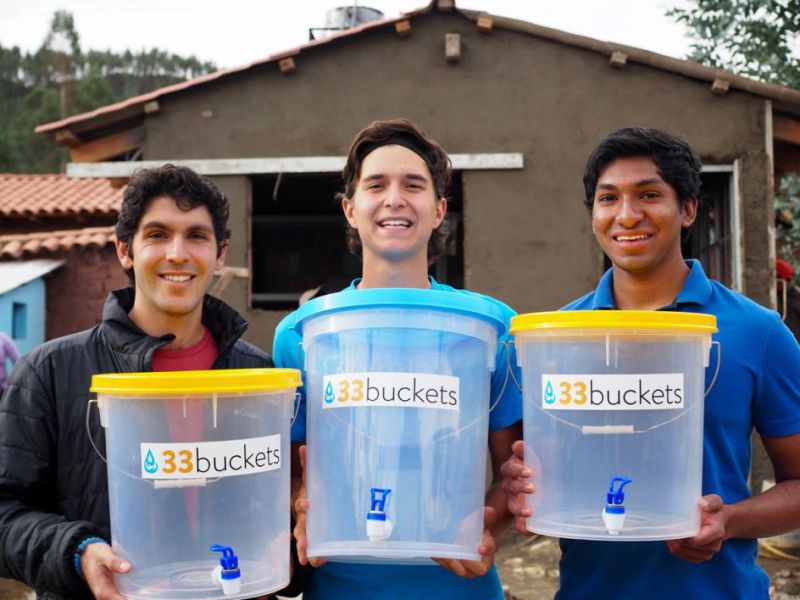Addressing Global Water Crisis with 33 Buckets
Published on by Water Network Research, Official research team of The Water Network in Technology
Innovators from Arizona State University have created a purification system and distribution model that has helped thousands of people in developing nations. The group’s work has expanded this summer, and it promises to grow.
The team — known as 33 Buckets — has traveled to Bangladesh, the Dominican Republic and Peru to install their small, customizable water filters and to train community leaders to maintain the devices and sell the clean water they produce.
 Each aspect, team members say, is crucial for long-term success, removing contaminants isn’t enough.
Each aspect, team members say, is crucial for long-term success, removing contaminants isn’t enough.
“We have the technology to solve the clean water problem in the world,” said Swaroon Sridhar, who studies biomedical engineering and handles the group's global partnerships. “What hasn’t been addressed is an effective method of global distribution. So we changed our focus to distribution and components for filtration as well as education, which is just as important to solving the water issue.”
The efforts started in 2010 as part of the Engineering Projects in Community Service Program in ASU’s Ira A. Fulton Schools of Engineering when the team designed a bucket-based filtration system for a girls’ school in Bangladesh that would eliminate arsenic, which has the atomic number 33. The system had to be redesigned when they realized arsenic wasn’t the contamination source — but the name stuck.
In time, the group — Mark Huerta, Vid Micevic, Paul Strong and Sridhar — created a system that now helps more than 12,000 people in Bangladesh. Last summer, they launched beyond the EPICs program and started working with international nonprofits. Last month, 33 Buckets launched clean water programs in the Dominican and Peru.
“So much of that first project was spent initially learning about the issue and then designing a model that would make the best impact long-term for the community,” Strong said. “Now, we have our model and philosophy of focusing not just on design, but also on full self-sustaining, community-run projects.”
In the Dominican, members of a rural community had to walk more than a mile to fetch water from a cave. They couldn’t rely on a system of pumps and pipes because it had been poorly maintained and the groundwater source it drew from was contaminated by bacteria and coliforms, including E.coli. But now, more than 1,000 people have access to their own source of clean, affordable water using the 33 Buckets system.
In Peru, meanwhile, about 1,500 people near Cusco now get clean water from a local business that employs the 33 Buckets method. They had been depending on a water supply with bacteria levels that were 2,000 times over a limit set by the World Health Organization.
The problem of water access isn’t solved. Around the world, about 1.8 million people don’t have clean drinking water and about 8 million die of water related diseases each year. The World Economic Forum calls the global water crisis the biggest threat to the planet over the next decade.
The World Health Organization estimates that more than half of the global disease problem can be solved by clean water access and sanitation and hygiene education.
The 33 Buckets team has set out to address the problem one community at a time. Their approach allows different filters and components to be swapped in and out based on a community’s specific needs.
“The design depends on what we find, what’s locally available and what can be maintained,” Strong said.
Huerta, the group’s CEO, said the customizable system is “really good for rural areas because it’s gravity-fed, no electricity required. The maintenance is also really easy. Only a few minutes a day, and it lasts for seven to 10 years.”
Read full article at: Arizona State University
Media
Taxonomy
- Treatment
- Purification
- Technology
- Filtration
1 Comment
-
we need cooperation to help Lower Sindh Pakistan communities with safe drinking water ....please check at www.ahdpak.org & AHD facebook page ...